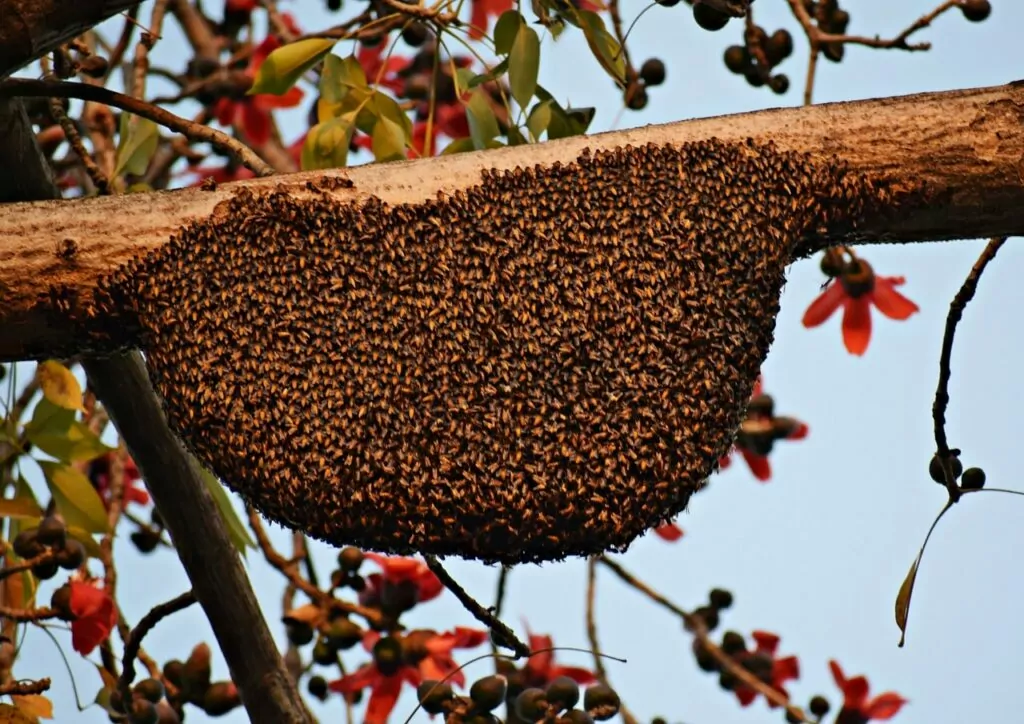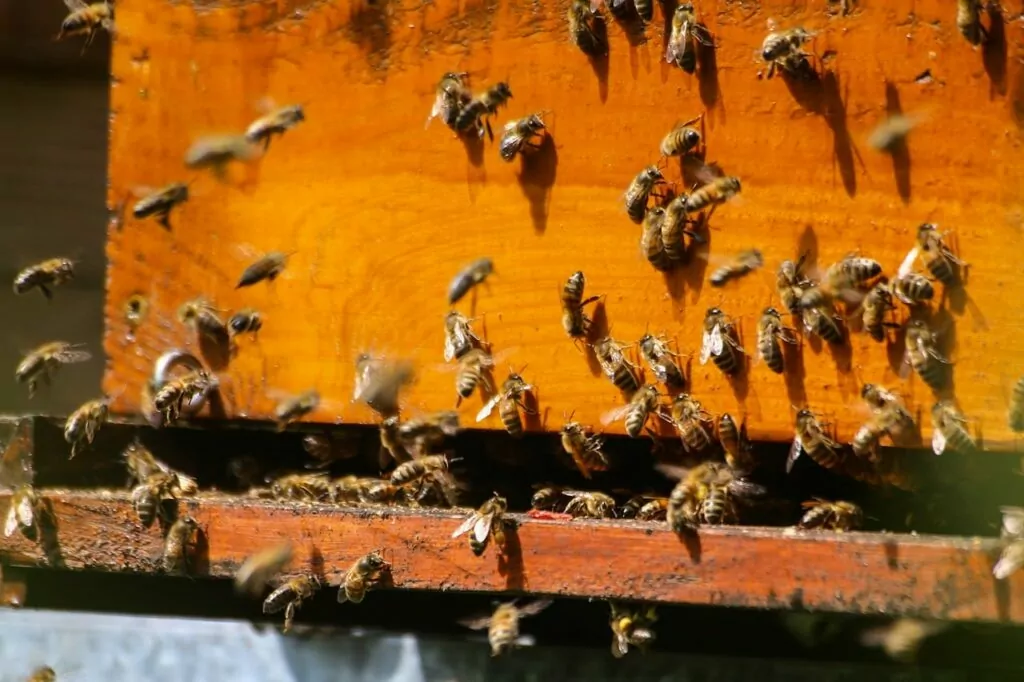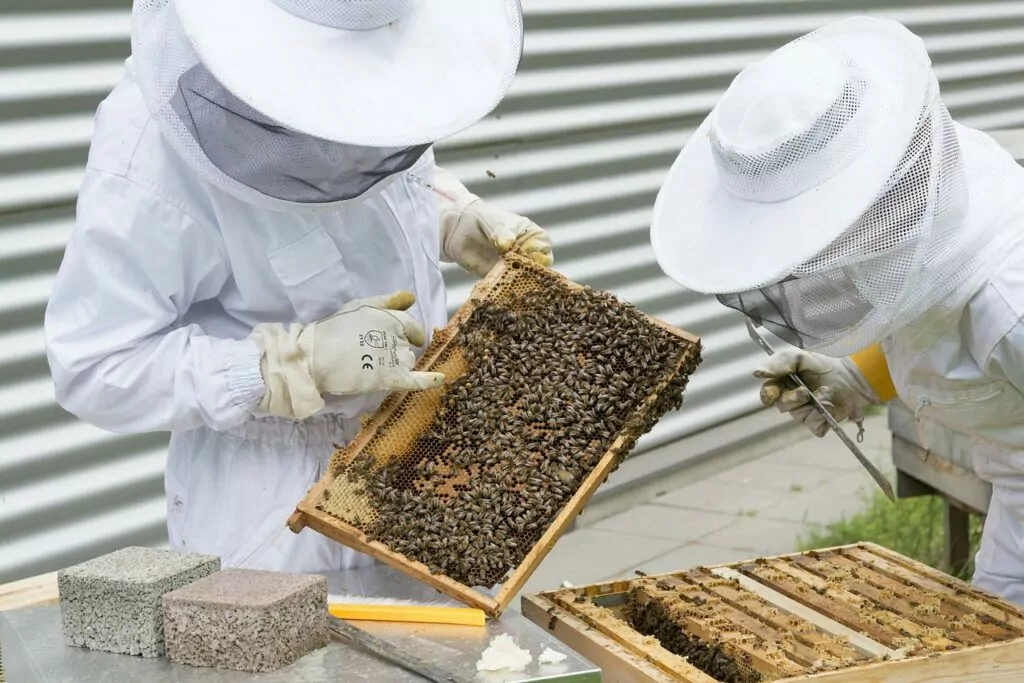Have you ever scrolled through beekeeping gear stores or perused beekeeping photos online? If so, you’ve likely noticed a common thread – bee suits tend to be predominantly white.
But why are bee suits white? Are there practical or scientific reasons behind it?
In this article, we’ll explore why beekeepers mostly wear white suits among over 10 million color choices. So, buckle up (or suit up!) and join us as we shed light on this most intriguing aspect of beekeeping fashion.
Why Beekeepers Wear White Protective Gear
Beekeeping is an age-old practice spanning thousands of years. However, this venture isn’t without its risks, as bees are notorious for their painful stings, posing potential dangers like allergies or adverse reactions for beekeepers.
For this reason, apiarists wear protective clothing designed to avert accidents and injuries during beekeeping activities.
But why the preference for white beekeeping suits? There are two primary reasons behind this choice.
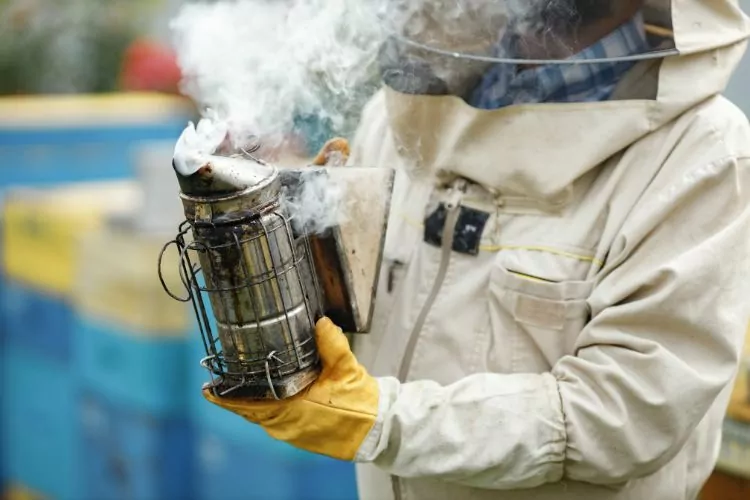
To Prevent Bee Aggression
Initially, beekeepers relied on everyday clothing like thick coats, hats, and gloves. However, they often prove ineffective against frenzied stingers.
The evolution towards white bee suits stems from an understanding of bee behavior.
Bees, with their excellent color vision, are attracted to vibrant hues like yellow, blue, and red but are found to be less responsive to white and lighter colors.
So, opting for white bee suits minimizes the likelihood of agitating bees, reducing the risk of aggressive behavior and stings.
To Prevent Heat Stroke
The second reason is a practical one: heat prevention. Bee suits made from traditional cotton can become uncomfortable during hot summer days.
And while modern iterations using multi-layered mesh provide improved ventilation, the color white itself contributes significantly to heat reflection.
From 10 am to 5 pm, the sun’s harsh rays bounced off white bee suits, preventing heat stroke and offering relief to beekeepers.
This cooling effect, proven effective enough for NASA’s spacesuits, adds another layer of protection against the sun’s intensity.
Why Do Bees Hate Dark Colors?
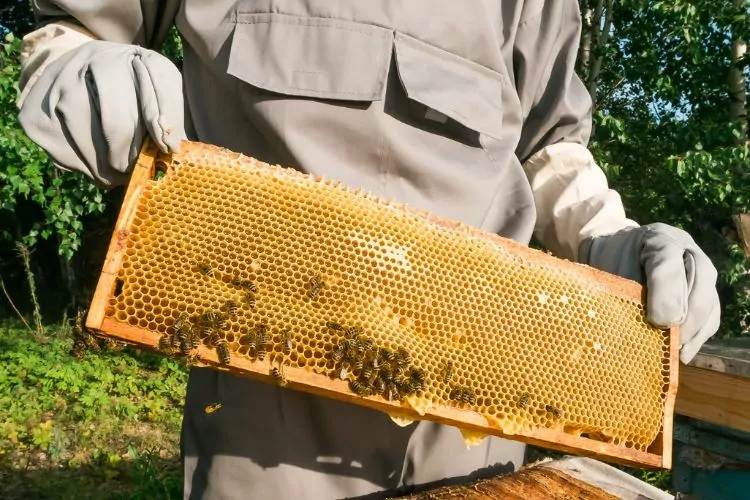
Honey bees, with their inherently docile nature, typically resort to aggression only when defending their colony or are seriously disturbed outside their hives.
However, evolving over time, bees also learned to identify natural environmental threats.
This defensive mechanism is common among many animals facing potential predators. And for bees, creatures eyeing their honey become the focus.
Darker colors, specifically black, resemble their natural foes like bears and skunks. As such, bees may intensify their defensive response around dark colors, associating them with danger.
So, if someone in a black outfit approaches a beehive, they’re more likely to face bee aggression.
In wearing white, experienced beekeepers avoid triggering this ancient response from the bees, reducing the risk of stings.
Other Advantages of Wearing White Suits
Wearing white bee suits isn’t just a fashion choice; it comes with practical advantages that beekeepers value.
Firstly, the calming effect of white on bees plays a crucial role. As it turns out, bees are less agitated by whites than other colors, helping maintain a peaceful hive environment.
Temperature is another essential factor.
Bees, being cold-blooded, are sensitive to their surroundings. Dark colors absorb more heat, potentially causing distress to the colony.
Moreover, the visibility of pests and contaminants on white fabric is a significant advantage.
With white, beekeepers can promptly identify and address potential issues, such as diseases or parasites, preventing the rapid spread of problems within the hive.
So, beyond its aesthetic appeal, a white bee suit serves the well-being of both beekeepers and bees alike.
Can You Only Use White Gears When Beekeeping?
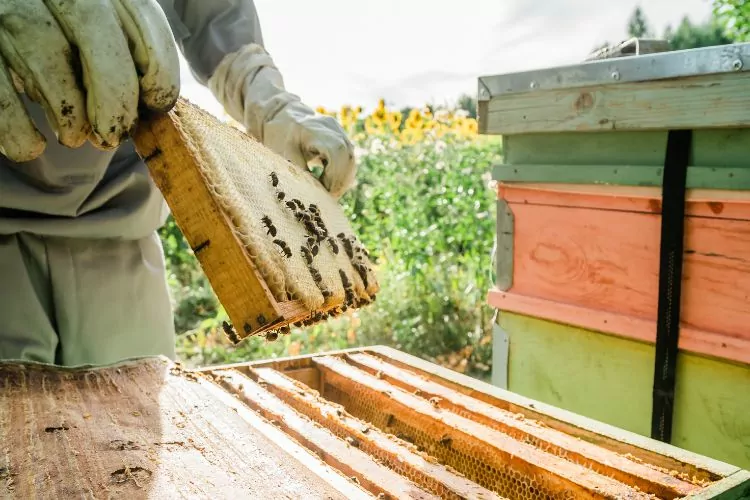
While white bee suits are the favored choice among beekeepers, alternatives exist.
Some opt for colors like khaki or green, believing these are less conspicuous to bees. Seasoned beekeepers also generally recommend white or tan attire for optimal safety.
However, does that mean you can only don white or tan beekeeping gear?
Not necessarily. Bees won’t mistake you for a flower even if you wear other bright colors, given their remarkable 170 odorant receptors.
Still, while you can explore various suit colors, it’s wise to avoid darker hues to maintain harmony during your beekeeping adventures.
FAQs
Below are some commonly asked questions about bee suits and hives that might help you.
What colors are bees attracted to?
Bees, like us, are trichromatic, relying on three photoreceptors for color vision. Their ability to perceive color is astonishingly quick, five times faster than humans.
Bees are most attracted to shades of blue, purple, violet, white, and yellow, as they use their keen vision to locate nectar sources. So, if you’re cultivating a bee-friendly garden, these vibrant hues will surely catch their attention.
What are beekeeper suits made of?
Beekeeper suits, typically a single piece of thick canvas or multiple layers of bee-proof mesh netting, boast long sleeves with elastic cuffs and extended legs around the ankles.
Modern suits commonly use cotton, nylon, or mesh. However, cotton has been a centuries-old choice for its thickness and natural white color, making it a durable shield against bee stings.
Why are beehives always white?
Beehives aren’t always white; beekeepers use various colors. Some even use pastel colors to prevent drifting, helping bees find their hive.
Experts recommend light colors, like white, in warmer climates to curb heat buildup. But conversely, in colder regions, darker hues absorb more sunlight, aiding bee survival in winter.
In other words, hive color is a thoughtful choice tailored to the buzzing residents inside.
Final Thoughts
In conclusion, the color of bee suits isn’t just a fashion statement but a strategic move rooted in bee behavior and practical considerations.
To recap, white minimizes bee aggression, prevents heat stress, and aids hive maintenance. In short, it’s a blend of science, tradition, and respect for these essential pollinators.
So, whether you’re donning classic white or exploring other shades, keep what we discussed above in your notes, and you’ll have an enjoyable bee experience!


